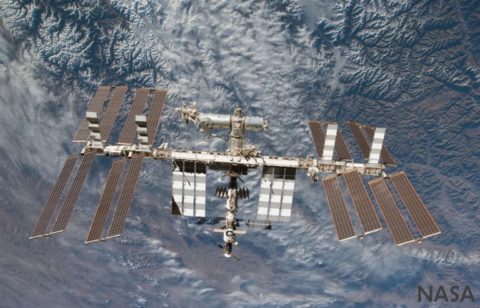The International Space Station (ISS) pass overhead twice while we were in the pub garden last night. It often does, obviously, and none of was simply seeing double. There are numerous websites that let you know when you can next see the ISS pass over your neighbourhood, VirtualAstro on Twitter puts out alerts, and thare are also smart phone apps that will push a timely notification.

Here are a few facts about the ISS:
- First component launched into orbit 1998
- Final pressurised module fitted in 2011
- Total cost estimated in 2010 as $150 billion
- Anticipated operation until 2028, extended from 2024
- Some components might be re-used to build a new space station
- ISS is a joint project between NASA, Roscosmos, JAXA, ESA, and CSA
- 109 x 73 metres, with solar panels extended
- 408 tonnes
- Orbits at an altitude of between 330 and 435Â kilometres
- Makes about 15 orbits of the Earth each day
- Takes 90 minutes to make one orbit
- Travels at a speed of approximately 28000 km/h
- Visible with the naked if you are in the right place at the right time
- Appears as a slow-moving, bright white dot (reflected sunlight)
- Takes about 10 minutes to pass from one horizon to another, but only visible when not in the Earth’s shadow
- Continuously occupied since 2nd November 2000
- 145 people from the USA and 46 from Russia have been aboard, plus people from 16 other nations as of January 2018
- Since the end of NASA’s Space Shuttle program, Russian Soyuz rockets used to transport supplies and crew
- In low orbit, the crew is protected from the Solar wind by the Earth’s magnetic field
- They have a safe space for increased protection if a solar flare is heading their way
- Main roles:Â laboratory, observatory, and factory
- Additional purposes:Â staging base for future Moon, Mars, and asteroid missions
- Other uses: commercial, diplomatic, and educational
- The toilets are fitted with spring-loaded restraining bars to ensure a good seal
- Solid waste is bagged and brought back down to Earth
- Urine is recycled into drinking water on board